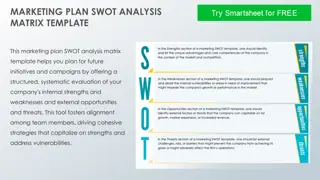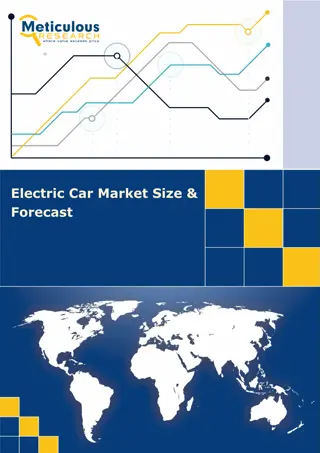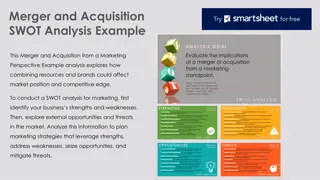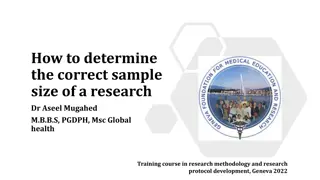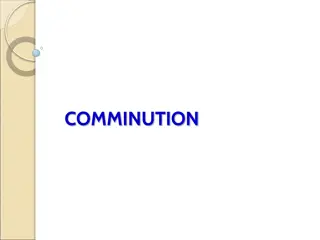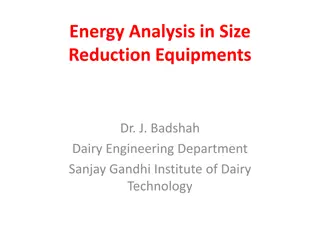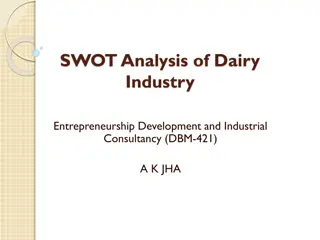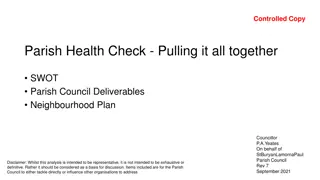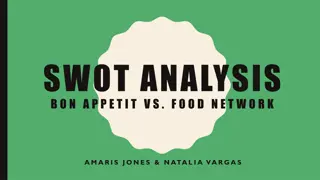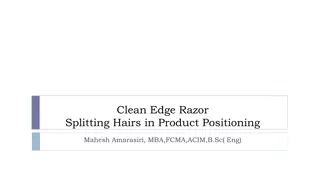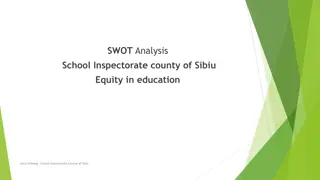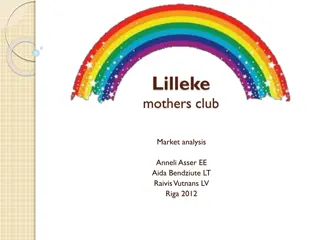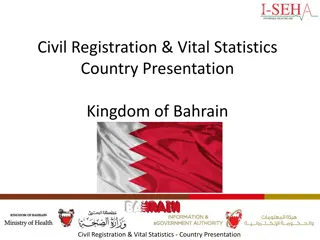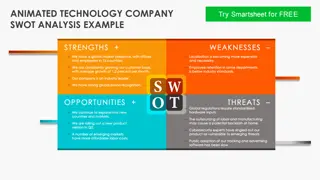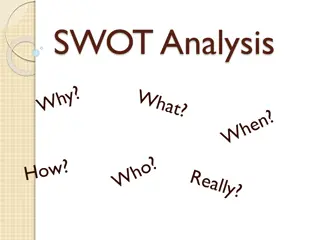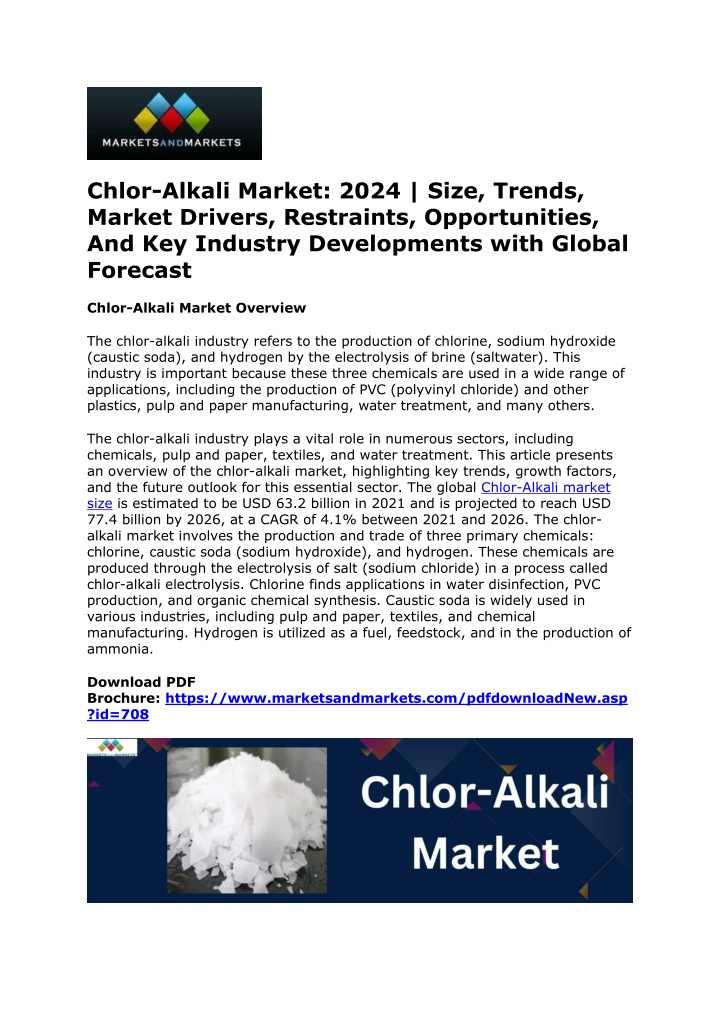
Chlor-Alkali Market SWOT Analysis, Size Comprehensive, Growth Forecast
The leading players in the Chlor-Alkali market are Olin Corporation(US), Westlake Chemical Corporation (US), Tata Chemicals Limited (India), Occidental Petroleum Corporation (US), Formosa Plastics Corporation (Taiwan), Solvay SA (Belgium), Tosoh Corporation (Japan), Hanwha Solutions Corporation (South Korea), Nirma Limited (India), AGC, Inc. (Japan), Dow Inc. (US), Xinjiang Zhongtai Chemical Co. Ltd. (China), INOVYN (UK), Ciner Resources Corporation (US), Wanhua-Borsodchem (Hungary), and others.
Download Presentation

Please find below an Image/Link to download the presentation.
The content on the website is provided AS IS for your information and personal use only. It may not be sold, licensed, or shared on other websites without obtaining consent from the author. If you encounter any issues during the download, it is possible that the publisher has removed the file from their server.
You are allowed to download the files provided on this website for personal or commercial use, subject to the condition that they are used lawfully. All files are the property of their respective owners.
The content on the website is provided AS IS for your information and personal use only. It may not be sold, licensed, or shared on other websites without obtaining consent from the author.
E N D
Presentation Transcript
Chlor-Alkali Market: 2024 | Size, Trends, Market Drivers, Restraints, Opportunities, And Key Industry Developments with Global Forecast Chlor-Alkali Market Overview The chlor-alkali industry refers to the production of chlorine, sodium hydroxide (caustic soda), and hydrogen by the electrolysis of brine (saltwater). This industry is important because these three chemicals are used in a wide range of applications, including the production of PVC (polyvinyl chloride) and other plastics, pulp and paper manufacturing, water treatment, and many others. The chlor-alkali industry plays a vital role in numerous sectors, including chemicals, pulp and paper, textiles, and water treatment. This article presents an overview of the chlor-alkali market, highlighting key trends, growth factors, and the future outlook for this essential sector. The global Chlor-Alkali market size is estimated to be USD 63.2 billion in 2021 and is projected to reach USD 77.4 billion by 2026, at a CAGR of 4.1% between 2021 and 2026. The chlor- alkali market involves the production and trade of three primary chemicals: chlorine, caustic soda (sodium hydroxide), and hydrogen. These chemicals are produced through the electrolysis of salt (sodium chloride) in a process called chlor-alkali electrolysis. Chlorine finds applications in water disinfection, PVC production, and organic chemical synthesis. Caustic soda is widely used in various industries, including pulp and paper, textiles, and chemical manufacturing. Hydrogen is utilized as a fuel, feedstock, and in the production of ammonia. Download PDF Brochure:https://www.marketsandmarkets.com/pdfdownloadNew.asp ?id=708
Browse in-depth TOC onChlor-Alkali Market 646 Tables 55 Figures 416 Pages View Detailed Table of Content Here: https://www.marketsandmarkets.com/Market-Reports/chlor- alkali-market-708.html Key Market Trends: Growing Demand for Chlorine and Caustic Soda: The increasing demand for chlorine and caustic soda from various industries is a significant driver of the chlor-alkali market. Industries such as water treatment, pharmaceuticals, and plastics rely heavily on these chemicals, propelling market growth. Sustainable Production Techniques: With a growing emphasis on sustainability, the chlor-alkali industry is adopting greener production techniques. Membrane cell technology and mercury-free electrolysis are gaining traction, reducing environmental impacts and improving energy efficiency. Shifting Geographical Demand: The demand for chlor-alkali products is gradually shifting towards emerging economies. Rapid industrialization and infrastructure development in regions like Asia-Pacific and Latin America are fueling market growth in these areas. Growth Factors: Expanding Applications in Water Treatment: The increasing need for clean and safe water, coupled with stringent environmental regulations, is boosting the demand for chlorine-based disinfection solutions. The water treatment sector is expected to be a key driver for the chlor-alkali market in the coming years.
Rising Demand for PVC: Polyvinyl chloride (PVC) is extensively used in construction, automotive, and packaging industries. As these sectors experience growth, the demand for chlorine, a key component in PVC production, is expected to rise, consequently driving the chlor-alkali market. Growing Chemical Industry: The chemical industry, a major consumer of chlorine and caustic soda, is expanding globally. The rising demand for chemicals and intermediates for various applications, such as pharmaceuticals, textiles, and detergents, will fuel the growth of the chlor-alkali market. Request Sample Pages:https://www.marketsandmarkets.com/requestsampleNew.asp?i d=708 Future Outlook: The chlor-alkali market is poised for steady growth in the coming years. The industry s focus on sustainable production techniques and the increasing demand for chlorine, caustic soda, and hydrogen in multiple sectors will be the primary growth drivers. Additionally, the ongoing industrialization in emerging economies and the rising need for clean water will further propel market expansion. However, challenges such as stringent environmental regulations, volatile raw material prices, and competition from alternative technologies may hinder market growth. To overcome these challenges, continuous innovation, research and development, and strategic collaborations are necessary to enhance efficiency, reduce costs, and develop environmentally friendly alternatives. By application, Glass account for the largest share for Soda Ash in the Chlor-Alkali market Soda ash is an essential component in the manufacture of glass. Glass is produced by melting silica soda ash (approximately 15% of the total weight of the glass) and calcium compounds along with coloring agents and metallic oxides. Glass products are widely used in the construction, automotive, packaging, household, laboratory, and other industrial applications. APAC is projected to drive the demand for soda ash in the glass application due to the high demand from emerging economies where the construction and automotive sectors are growing. Get 10% Free Customization on this Report: https://www.marketsandmarkets.com/requestCustomizationN ew.asp?id=708
APAC accounted for the largest share in the global Chlor-Alkali market APAC accounted for the largest share of the Chlor-Alkali market in 2020, followed by Europe and North America. APAC recorded the largest demand for chlor-alkali in the past few years due to the growing investments in developing countries and manufacturing capacity additions across end-use industries, especially water treatment, and chemical processing. Increasing investments in infrastructure development projects, growing urbanization, rapid industrialization, improving the standard of living, and thriving automotive sector, as well as high economic growth, are the key factors for the regions overall growth. Chlor-Alkali Market Key Players: The leading players in the Chlor-Alkali market are Olin Corporation(US), Westlake Chemical Corporation (US), Tata Chemicals Limited (India), Occidental Petroleum Corporation (US), Formosa Plastics Corporation (Taiwan), Solvay SA (Belgium), Tosoh Corporation (Japan), Hanwha Solutions Corporation (South Korea), Nirma Limited (India), AGC, Inc. (Japan), Dow Inc. (US), Xinjiang Zhongtai Chemical Co. Ltd. (China), INOVYN (UK), Ciner Resources Corporation (US), Wanhua-Borsodchem (Hungary), and others. Olin Corporation manufactures chemicals and ammunition. Its business is divided into three segments, Chlor Alkali Products and Vinyls, Epoxy (epoxy materials and precursors), and Winchester (arms and ammunition). Its Chlor Alkali Products include chlorine and caustic soda, methyl chloride, methylene chloride, ethylene dichloride & vinyl chloride monomer, chloroform, hydrochloric acid, simultaneously with 1 ton perchloroethylene, carbon tetrachloride, trichloroethylene, bleach products, hydrogen, and potassium hydroxide. The Chlor Alkali and Epoxy businesses were added to the company as a spin-off from The Dow Chemical Company in 2015. The company produces chlorine, caustic soda, and hydrogen through the electrolysis of salt, also known as Electrochemical Unit (ECU). These products are produced simultaneously in the proportion of 1 ton of chlorine to 1.1 tons of caustic soda and 0.03 tons of hydrogen. The company offers these chlor-alkali products for polyvinylchloride (PVC), water treatment, alumina, pulp & paper, detergents & soaps, and other applications. It has seven production facilities for chlorine and caustic soda in the US and Canada. It has a strong presence in North America and also offers its products across Europe, the Asia Pacific, and Latin America. Request New Version: https://www.marketsandmarkets.com/RequestNewVersion.as p?id=708
Westlake Chemical Corporation is a global manufacturer and supplier of petrochemicals, vinyls, polymers, basic chemicals, and building products. The company operates its business through two segments: Vinyls and Olefins. The Olefins segment includes petrochemical products; and ethylene and styrene monomers. The Vinyls segment includes polyvinyl chloride (PVC), vinyl chloride monomers (VCM), ethylene dichloride (EDC), chlor-alkali (chlorine and caustic soda), chlorinated derivative products, and other related products. The company offers products for the packaging, healthcare, automotive, consumer goods, and other sectors. It has an overall production capacity of 22.1 million tons/ year (44.3 billion lbs/yr). It has manufacturing facilities for chlor-alkali products in the US and Germany. The chlorine is utilized for the production of vinyl chloride monomers (VCM), chlorinated derivative products, and supplied to industries. Caustic soda is utilized for the production of alumina, pulp & paper, organic & inorganic chemicals, and others. The company has business operations in North America, Europe, and the APAC.




